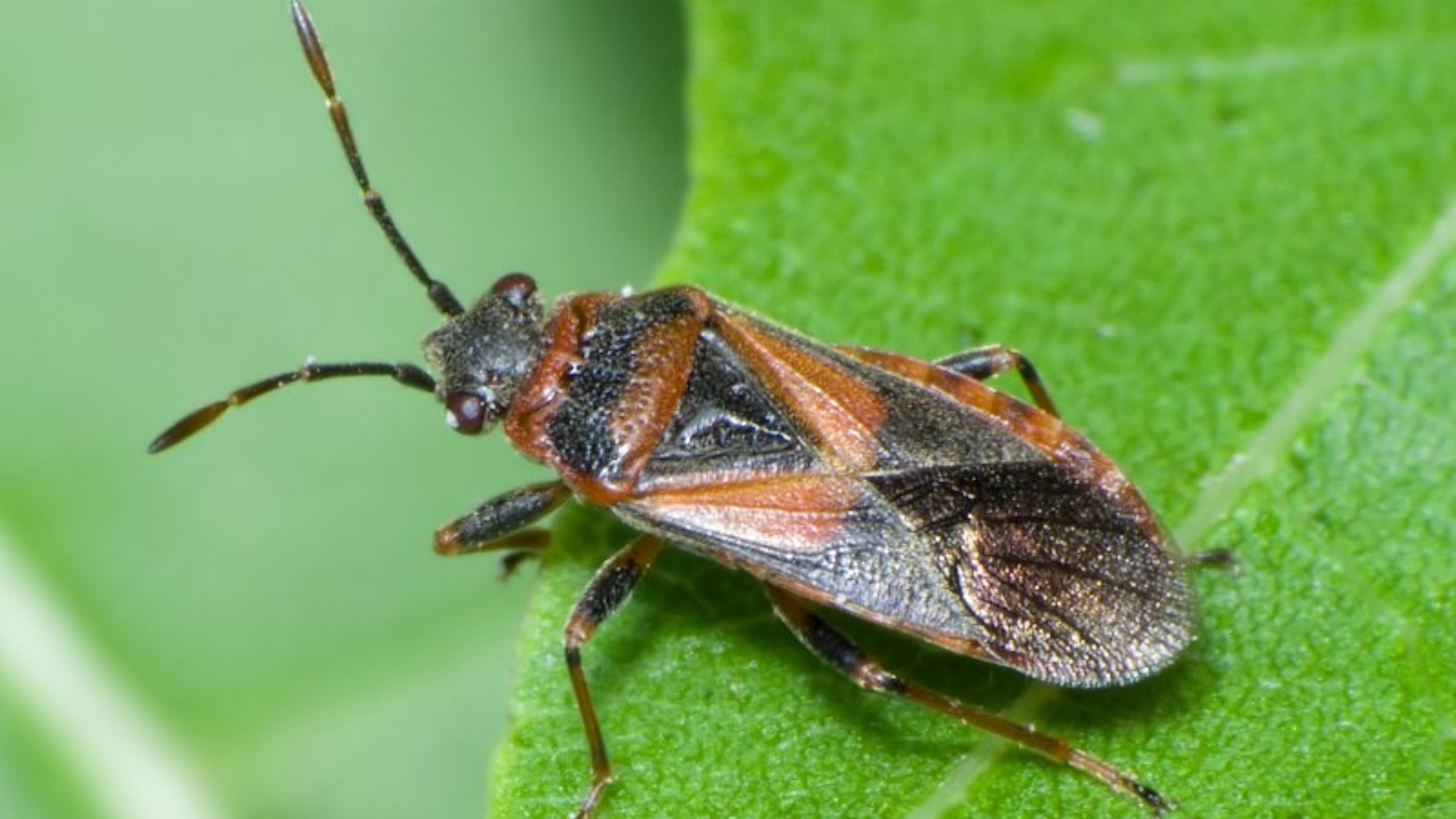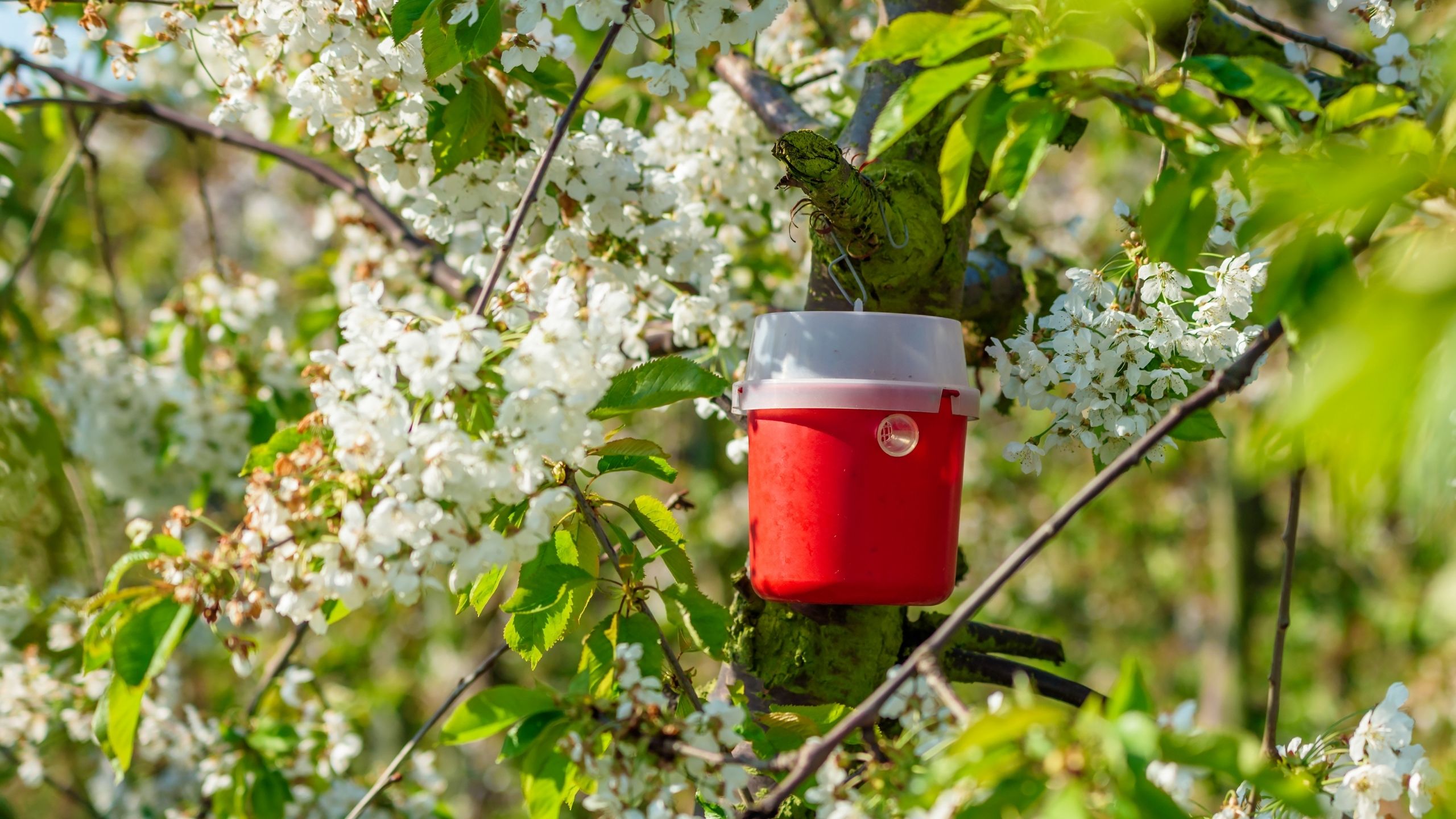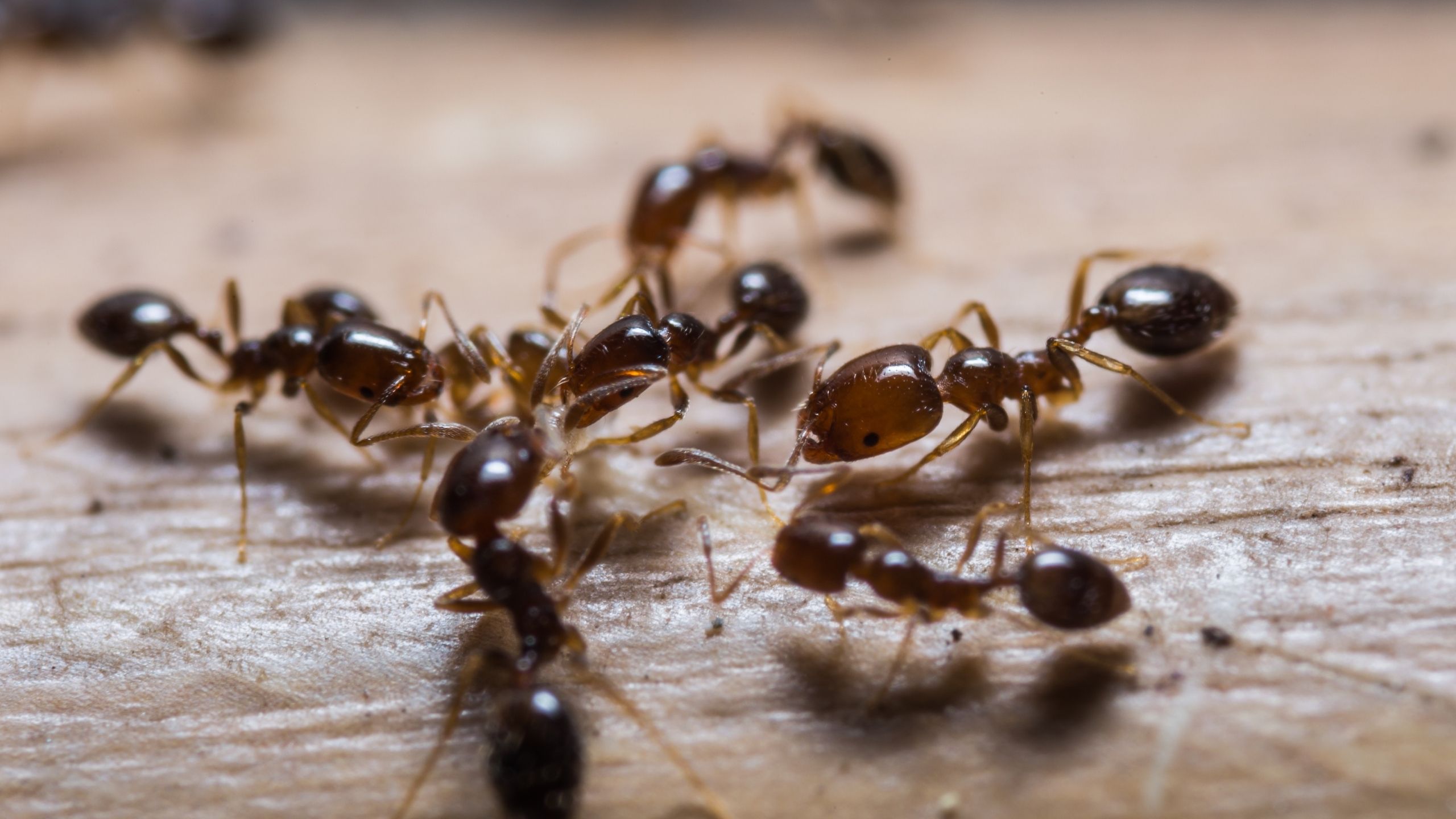Invasive Insect Look-Alikes
Mistaken Insect Identity
October 2015
Lori Spears, Extension Entomologist (No longer at USU) • Ryan Davis, Arthropod Diagnostician (No longer at USU) • Ricardo Ramirez, Extension Entomologist (No longer at USU)

Building Identification Skills
Pest identification is the cornerstone of integrated pest management, but is a skill that can be difficult to master. Mistakes in identification are common, as many insects look and act alike, and/or can cause similar injury. Misidentifications could potentially lead to adverse consequences. A number of guides and websites can assist with insect identifications (e.g., bugguide.net is complete with color photographs and links to identification keys). In addition, several state and federal agencies have diagnostic labs to help assess suspected insect injury; see "Contact Information" and "For Additional Information" at the end of this fact sheet for listings.
Here, we provide a quick identification reference guide for brown marmorated stink bug and Japanese beetle (both have been found in Utah) and emerald ash borer and Asian longhorned beetle (not yet detected in Utah). We focus on these four insects because they are often mistaken as other insects. We also briefly describe some similar species that can be mistaken for these insects. Note that this publication only covers the most common look-alike species and not ALL that resemble these invasives.
Insect look-alike species are sometimes other pests, but they can also be beneficial insects. For example, the spined soldier bug (Podisus maculiventris) is a beneficial, predatory stink bug (Fig. 2), but can be mistaken for the destructive and invasive brown marmorated stink bug (Halyomorpha halys). Similarly, the six-spotted tiger beetle (Cicindela sexguttata) is a predatory ground beetle (Fig. 3) that can be misidentified by some as the invasive Japanese beetle (Popillia japonica).


Brown Marmorated Stink Bug
Brown Marmorated Stink Bug (BMSB; Halyomorpha halys) (Figs. 4-6) is an invasive pest that is native to Asia and has been detected in 42 states, including Utah, in Salt Lake (since 2012), Utah (2013), Davis (2015), and Weber (2015) counties. BMSB is a significant pest of various crops, including fruits, vegetables, seeds, nuts, some field crops, and ornamental plants. It is also considered a nuisance pest as it overwinters in urban areas and releases a foul smelling odor when disturbed or crushed.

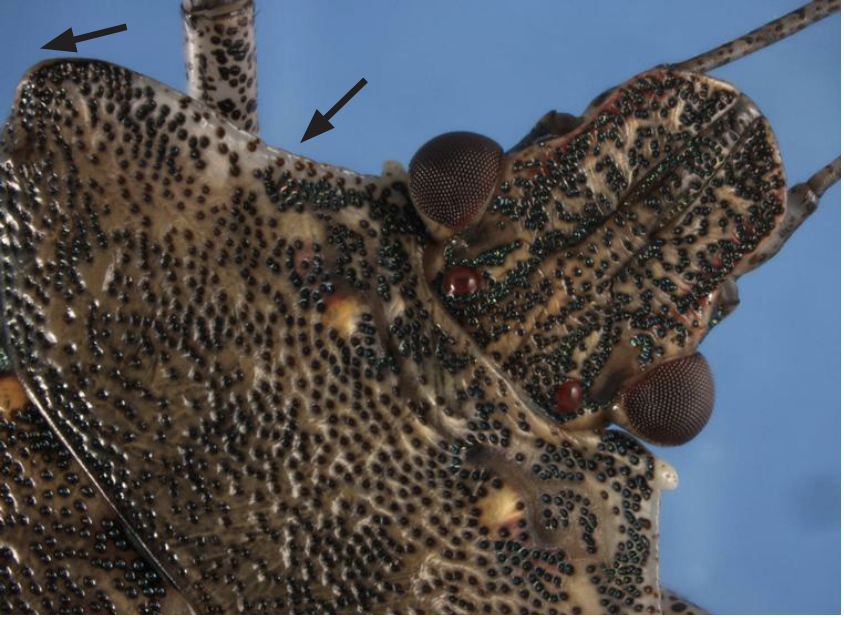

Brown Marmorated Stink Bug Look-Alikes
Rough Stink Bug (Brochymena spp.) (Fig. 7) adults are considered both predators and pests, and are commonly mistaken for BMSB in Utah.

Common Brown Stink Bugs (Euschistus spp.) (Fig. 8) are pests of fruit, seeds, grains, and nut crops. They are very common in Utah, and can be easily mistaken for BMSB.

Other Similar Species
- Green Stink Bug (Acrosternum hilare)
- Squash Bug (Anasa tristis)
- Conchuela Stink Bug (Chlorochroa ligata)
- Coenus Stink Bug (Coenus delius)
- Consperse Stink Bug (Euschistus conspersus)
- Western Conifer Seed Bug (Leptoglossus occidentalis)
- Spined Soldier Bug (Podisus maculiventris) - see p. 1
- Red-Shouldered Stink Bug (Thyanta custator)
Japanese Beetle
Japanese Beetle (Popillia japonica) (Figs. 9-10) is an invasive pest that is native to Japan. It has previously been found in Utah (Cache, Salt Lake, and Utah counties), but has been considered eradicated from the state. Despite this, reintroductions may occur at any time. Japanese beetles feed on more than 300 plant species, including numerous trees, ornamentals, vines, flowers, fruits, vegetables, weeds, and field crops.


Japanese Beetle Look-alikes
Other scarab beetles, such as the False Japanese Beetle (Strigoderma arbicola), Hairy Bear Beetle (Paracotalpa granicollis), and Green Fruit Beetle (Cotinis mutabilis) (Figs. 11-12) are beetles that belong to the same family as the Japanese beetle and are common in Utah. False Japanese beetles are sometimes called sandhill chafers and rarely cause economic damage to crops. Hairy bear beetles feed on tree buds, blossoms, and leaves. Green fruit beetles feed on pollen, nectar, and petals, and overripe or damaged fruit, but are not known to cause damage to leaves, ripening and ripe fruit, or turfgrass.


Other Similar Species
- Green Stink Bug (Acrosternum hilare)
- Festive Tiger Beetle (Cicindela scutellaris)
- Six-Spotted Tiger Beetle (Cicindela sexguttata) - see p.1
- Masked Chafer (Cyclocephala spp.)
- Bumble Flower Beetle (Euphoria spp.)
- Rainbow Scarab (Phanaeus vindex)
- May/June Beetle (Phyllophaga spp.)
Emerald Ash Borer
Emerald Ash Borer (Agrilus planipennis) (Figs. 13-15) is an invasive beetle that is native to Asia and parts of Russia, and is considered to be the most destructive forest insect to ever invade the U.S. This beetle has not yet been found in Utah, but has been found in neighboring Colorado and much of the eastern U.S.
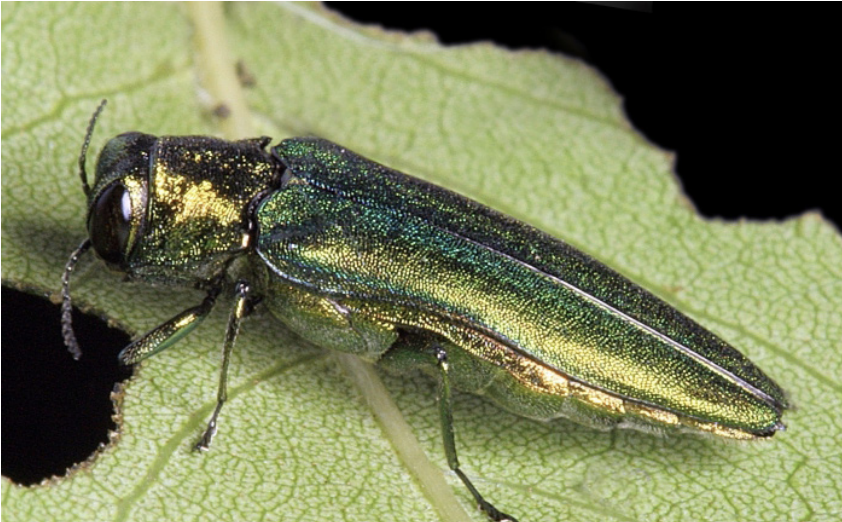

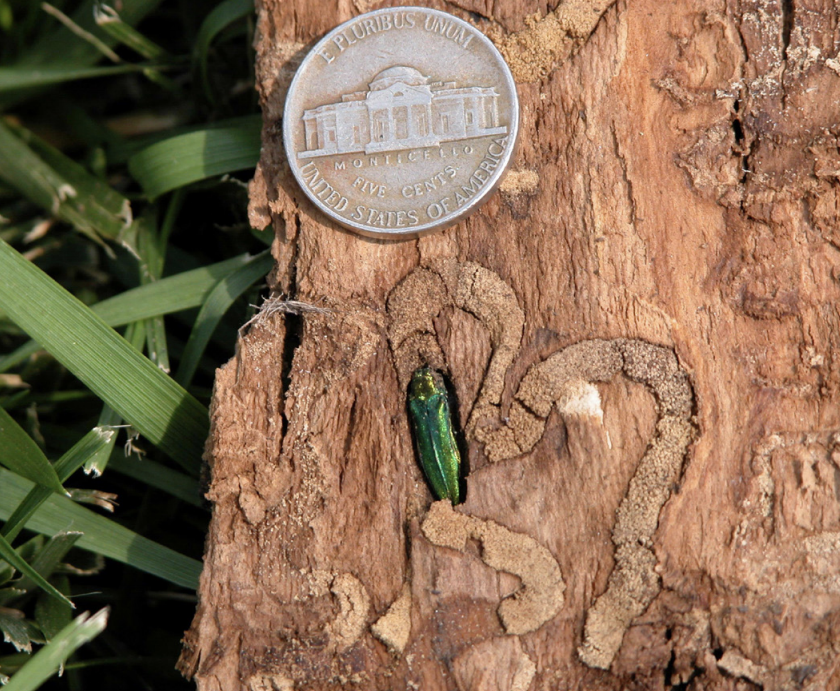
Emerald Ash Borer Look-Alikes
Flatheaded, Metallic Beetles (Agrilus spp.), such as the honeylocust borer (A. difficilis) and the bronze birch borer (A. anxius) (Fig. 16) are beetles that are closely related to the emerald ash borer, and are pests of honey locust and birch, respectively. Both species are common in Utah.

Lilac-Ash Borer (Podosesia syringae) and Banded Ash Borer (Neoclytus caprea) (Fig. 17) look nothing like the emerald ash borer as adults. However, both species commonly infest ash trees, and are mistaken as emerald ash borer, so much so that we feel it is important to mention them.

Other Similar Species
- Gambel Oak Borer (Agrilus quericola)
- Rose Stem Girdler (Agrilus rubicola)
- Golden Buprestid (Buprestis aurulenta)
- Caterpillar Hunter (Calosoma scrutator)
- Flatheaded Apple Tree Borer (Chrysobothris femorata)
- Pacific Flatheaded Borer (Chrysobothris mali)
- Six-Spotted Tiger Beetle (Cicindela sexguttata) - see p. 1
- Banded Ash Borer (Neoclytus caprea)
- Japanese Beetle (Popillia japonica) - see p. 3
Asian Longhorned Beetle
Asian Longhorned Beetle (Anoplophora glabripennis) (Figs. 18-19) is an invasive beetle that originates from Asia, and is currently found in a few eastern U.S. states, but has not been found in Utah. Adults feed on living hardwood trees, including ash, birch, maple, elm, and willow.


Asian Longhorned Beetle Look-Alikes
White-Spotted Sawyer (Monochamus scutellatus) (Fig. 20) is a common wood-boring beetle found throughout the U.S., including Utah. This insect is not generally considered a pest, but closely resembles and is very commonly mistaken for the Asian longhorned beetle.

Banded Ash Borer (Neoclytus caprea) (Fig. 21) is native to North America and is common in Utah. It is a pest of hickory, elm, and oak, but generally attacks only unhealthy trees.

Other Similar Species
- Honeylocust Borer (Agrilus difficilis)
- Metallic Wood-Boring Beetle (Agrilus walsinghami)
- Western Eyed Click Beetle (Alaus melanops)
- Spotted Pine Sawyer (Monochamus clamator)
- Prionus Root Borer (Prionus californicus)
- Banded Alder Borer (Rosalia funebris)
Contact Information
If you suspect one of the invasive species described here and have ANY doubts on identification, consult an entomologist or a trained specialist. Contact the Utah Plant Pest Diagnostic Lab (http://utahpests.usu.edu/uppdl/), your local Extension office (http://extension.usu.edu/), or the Utah Department of Agriculture and Food's Insect and Pest Program (http://ag.utah.gov/farmers/plants-industry/insect-and-pest-program/) for assistance.
For Additional Information
- Herbert, D.A., et al. 2014. Field guide to stink bugs of agricultural importance in the United States. Published by Virginia Cooperative Extension, Virginia Tech, and Virginia State University.
- Hodgson, E., D. Alston, and C.A. Stanley. 2010. Japanese Beetle (Popillia japonica). ENT-100-06PR. Fact sheet published by Utah State University Extension and Utah Plant Pest Diagnostic Laboratory. Click here for updated 2020 version.
- Jacobs, S. 2010. Brown Marmorated Stink Bug (Halyomorpha halys). Fact sheet published by the Department of Entomology, Pennsylvania State University.
- Petrizzo, E., and D.G. Alston. 2011. Brown Marmorated Stink Bug [Halyomorpha halys (Stål)]. ENT-144-11. Fact sheet published by Utah State University Extension and Utah Plant Pest Diagnostic Laboratory. Click here for updated 2017 version.
- Rebek, K.A., E.J. Rebek, and D.G. McCullough. 2005. Don’t be fooled by look-alikes! Extension Bulletin E-2944. Michigan State University.
- Spears, L.R., R.S. Davis, and R.A. Ramirez. 2014. Emerald Ash Borer [Agrilus planipennis (Fairmaire)]. ENT-171-14-PR. Fact sheet published by Utah State University and Utah Plant Pest Diagnostic Laboratory.
Additional information/material can be found at asianlonghornedbeetle.com, invasive.org, stopbmsb.org, http://www.emeraldashborer.info/, dontmovefirewood.org, and hungrypests.com.
Related Research







